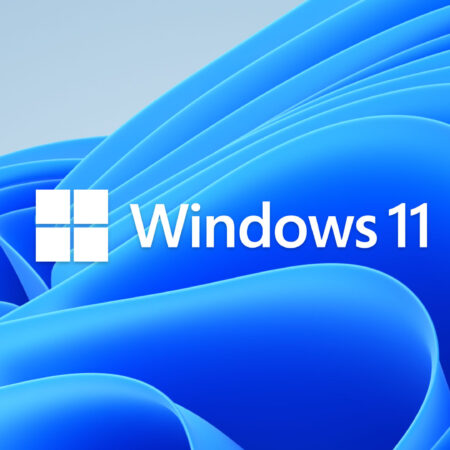Microsoft OneNote is a powerful, feature-rich note-taking application designed to organize information, capture thoughts, and manage tasks. As part of the Microsoft 365 suite, it offers seamless integration with other Microsoft apps and services, making it a popular choice among students, professionals, and casual users alike. In this article, we’ll explore what OneNote is, its device compatibility, syncing capabilities, features, and tips for making the most of it.
What is OneNote?
OneNote is a digital notebook that mimics the traditional pen-and-paper experience while offering the advantages of modern technology. It allows users to store text, images, web clippings, audio recordings, and more in a structured format. With a familiar notebook-style interface, OneNote helps users create multiple notebooks, which can be divided into sections and pages. Whether you’re jotting down lecture notes, brainstorming ideas, or managing projects, OneNote keeps everything organized in one place.
Device Compatibility
OneNote is available on multiple platforms, ensuring users can access their notes anytime and from anywhere:
Windows: Fully-featured desktop version integrated with Microsoft 365
Mac: OneNote for macOS with near-parity in features to the Windows version
Android: A mobile version optimized for smartphones and tablets
iOS: Compatible with iPhone and iPad, including Apple Pencil support
Web: Accessible through browsers via the OneNote Web app, ideal for quick access
This broad compatibility ensures that your notes remain available across devices, whether you switch between a laptop, tablet, or phone.
Syncing and Cloud Integration
OneNote leverages Microsoft OneDrive for cloud synchronization, allowing real-time access to notes across all your devices. Changes made on one device automatically sync to others, ensuring you always have the latest version of your notes.
Features of OneNote’s syncing system:
Cross-platform synchronization via OneDrive (5GB free storage with additional plans available).
Offline Access: Notes remain available offline and sync automatically when reconnected to the internet.
Version History: You can restore previous versions of your notes, ensuring important content is never lost.
Collaboration: Share notebooks with others for group projects or meetings. Users can edit and comment simultaneously.
Key Features of Microsoft OneNote
OneNote’s versatility makes it more than just a simple note-taking app. Here’s a breakdown of its best features:
1. Notebook Structure and Organization
Notebooks: Create multiple notebooks for personal, academic, or professional purposes. Sections & Pages: Each notebook contains sections that can be further divided into pages, helping keep content structured.
Tags: Use customizable tags (like “To-Do” or “Important”) to highlight and categorize information for easy retrieval.
2. Multimedia Support
Audio Recording: Record lectures or meetings directly within a page.
Images and Web Clippings: Insert photos, screenshots, or web pages to enrich your notes.
Draw and Annotate: Use stylus or finger input to sketch diagrams or annotate PDFs directly.
3. Task Management and To-Do Lists
Create checklists or task lists to manage your daily activities.
Integrate with Microsoft Outlook to set reminders or sync tasks.
Link tasks between OneNote and Microsoft To-Do for better productivity.
4. Collaboration and Sharing
Share notebooks or specific sections with classmates, colleagues, or friends for collaboration.
Use real-time editing to work on the same content simultaneously.
Add comments and mentions to discuss ideas or assign tasks within shared notes.
5. Search Functionality
Quickly find notes across notebooks with keyword-based search.
Filter by tags, dates, or authors, especially useful in collaborative notebooks.
Best Practices for Using OneNote Effectively
Here are some tips to get the most out of Microsoft OneNote:
1. Organize Notebooks Logically
Create separate notebooks for different areas of your life—like work, personal projects, and school—to avoid clutter. Use sections to break down larger topics (e.g., a section for each subject in a school notebook).
2. Use Tags Wisely
OneNote’s tagging system is powerful. Use tags like “Important,” “To-Do,” or “Question” to flag content and easily retrieve it later through the search feature.
3. Collaborate on Projects and Meetings
For group projects, create shared notebooks so everyone stays on the same page. Use @mentions to direct tasks or questions to specific people. This makes OneNote excellent for team meetings and brainstorming sessions.
4. Integrate with Other Microsoft Apps
Maximize productivity by linking OneNote with other Microsoft tools:
Outlook Integration: Turn meeting notes into tasks or reminders.
Teams Integration: Use OneNote as a shared space during virtual meetings or online classes.
5. Leverage Drawing and Handwriting Tools
If you have a tablet with a stylus, use OneNote’s drawing tools to sketch diagrams or write handwritten notes. You can even convert handwritten content into typed text with ink-to-text functionality.
6. Backup Critical Notes
Although OneNote syncs with the cloud, consider exporting important notebooks as PDFs or backups for extra security.
Conclusion
Microsoft OneNote is a versatile note-taking solution that caters to a wide range of users, from students taking lecture notes to professionals managing tasks and meetings. With robust cloud syncing, cross-platform availability, and rich multimedia features, it serves as a powerful tool for both personal and collaborative work.
By organizing content effectively, using tags and integrations wisely, and leveraging its multimedia features, you can turn OneNote into a central hub for productivity. Whether you’re looking to manage your daily tasks, plan a project, or keep track of creative ideas, OneNote provides the flexibility and functionality to meet your needs.
Why not give it a try? Download OneNote today on your App Store and explore how it can revolutionize your note-taking habits!






